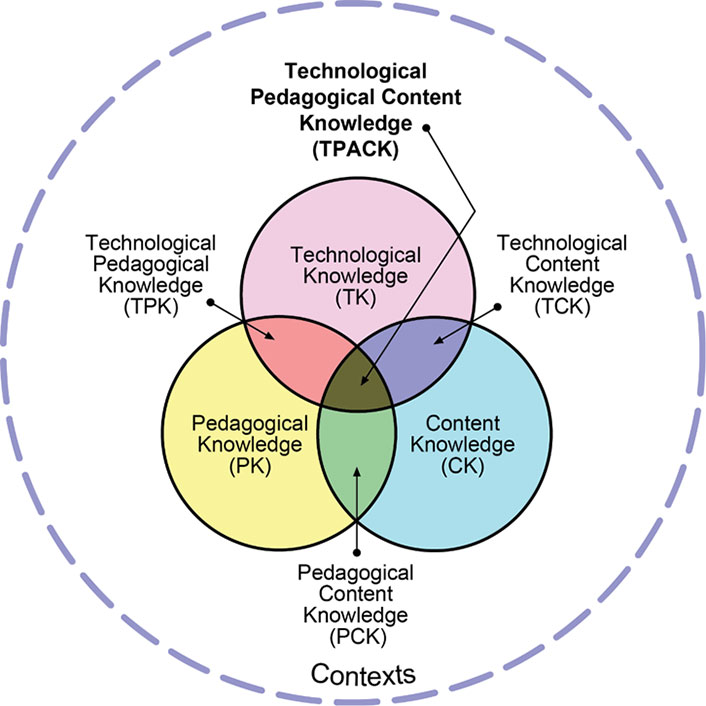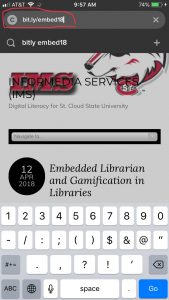Creating a Role for Embedded Librarians Within an Active Learning Environment
https://www.mendeley.com/catalogue/561a2f7b-b7a8-395f-90c5-8855b830b939/
In 2013, the librarians at a small academic health sciences library reevaluated their mission, vision, and strategic plan to expand their roles. The school was transitioning to a new pedagogical culture and a new building designed to emphasize interprofessional education and active learning methodologies. Subsequent efforts to implement the new strategic plan resulted in the librarians joining curriculum committees and other institutional initiatives, such as an Active Learning Task Force, and participating in faculty development workshops. This participation has increased visibility and led to new roles and opportunities for librarians.
+++++++++++++
Reflections on an Embedded Librarianship Approach: The Challenge of Developing Disciplinary Expertise in a New Subject Area
https://www.mendeley.com/catalogue/805a60fc-08d5-383f-9ddc-4cac92262650/
https://core.ac.uk/download/pdf/212696811.pdf
Embedded librarianship has emerged as a user-centred approach to academic library services, requiring an in-depth understanding of the education and research priorities of students and staff. User-centred approaches require the development of disciplinary expertise and engagement with the research culture of a particular subject area. This paper details the author’s experiences in situating his practice within the discipline of pharmacy and discusses some of the challenges around the scale and sustainability of such specialised support. Regardless of the extent to which a librarian is ‘embedded’, they must see themselves as learners, too, as they develop their understanding of the disciplines they support through an ongoing process of experiencing, reflecting, conceptualising and testing in their practice.
definition:
Embedded librarianship differs from traditional librarian roles in its focus on working in partnership with clients, rather than simply providing a support service (Carlson & Kneale, 2011).
In this sense, embedded librarianship is user-centred rather than library-centred and requires the librarian to develop a holistic understanding of the environment in which their client groups operate.
most training materials followed a one-size-fits-all approach, where students would be taken from locating background information and textbook chapters all the way to searching for primary evidence in a bibliographic database within the same hour. Most sessions ran over time and were overloaded with content. In some instances, students complained that they had already covered this content in their previous year.
While information literacy as a construct is valued by librarians, the term’s use remains
largely restricted to the library and information science (LIS) field and might even be labelled
undiscovered country for academics (McGuinness, 2006, p. 580). Academics often consider
IL instruction as a service provided by the library and do not see librarians as partners, nor
do they see the value in integrating course-specific IL training (Derakhshan & Singh, 2010).
a spectrum of embeddedness with 5 levels (2008, p. 442), from ‘entry level’, where the librarian might collaborate on assignment development and deliver a standalone IL session, to ‘co-teaching’, where the librarian co-teaches and develops discipline-specific course materials, lectures, assessment designs and grading in collaboration with academic staff. Their findings suggest that student performance is positively related to the level of librarian involvement
phenomenographic interview methodology, where the librarian is positioned as a ‘curricular
consultant’
My note (sarcastic): whoa, what a novelty; it is repeated for two decades at SCSU, but “hot water still not invented” and the ATT still does not have neither a faculty, nor ID, but the only Ph.D. in ID just got laid off.
Hallam, Thomas and Beach illustrate that the library is not singularly responsible for developing information and digital literacies, and therefore, a collaborative approach involving a range of stakeholders including academic staff, learning designers, educational technologists and others is required
++++++++++++++
more on embedded librarianship in this IMS blog
https://blog.stcloudstate.edu/ims?s=embedded+librarian


